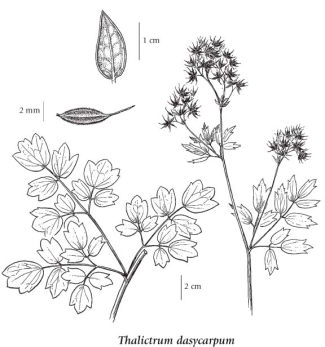Thalictrum dasycarpum Fisch. & Avé-Lall.
purple meadowrue (purple meadow-rue)
Ranunculaceae (Buttercup family)
Introduction to Vascular Plants
purple meadowrue (purple meadow-rue)
Ranunculaceae (Buttercup family)
Introduction to Vascular Plants
